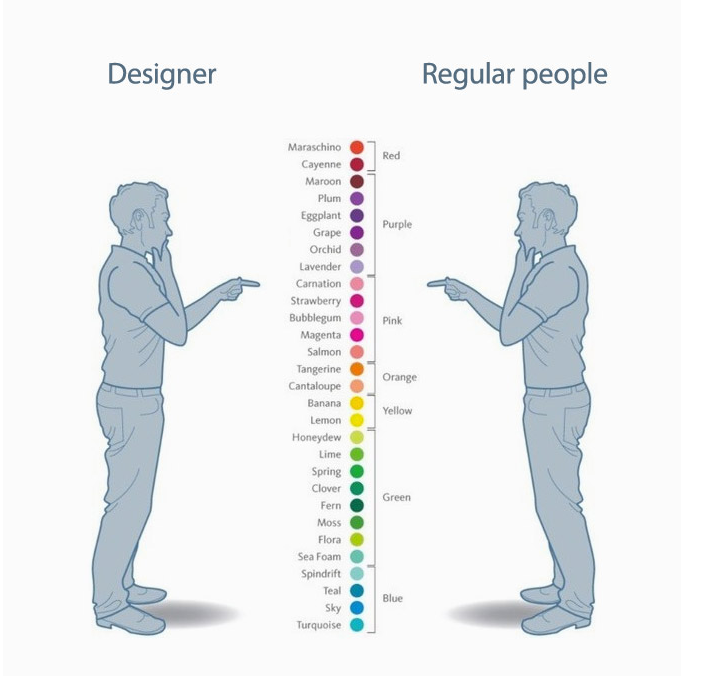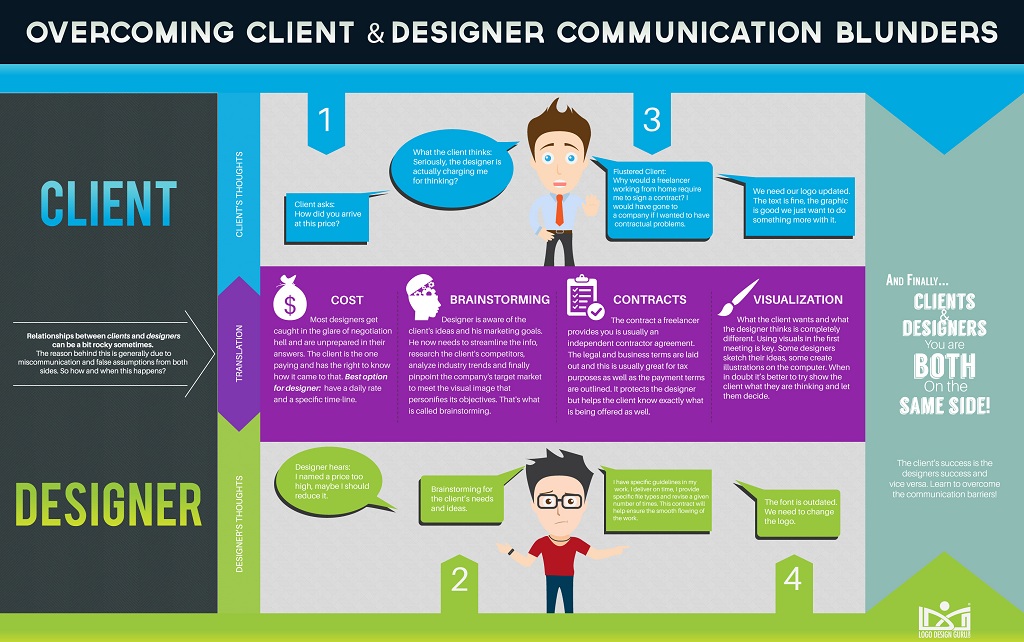
They require a lot of effort and understanding to build a standing partnership. A good partnership between the web designer and the client is extremely important because it defines the attitude to the task.
Clients should understand that every designer is different and approaches the task in its own way. In order to make the approach comprehensible, it is advised to build a relationship based on open communication.
Also, to make sure that the project is developed according to the client’s expectations and requirements, it is vital to brief the web designer prior to starting off on the journey.
Why is it important to have a good client relationship?
It is no secret that building a good relationship with the client is sometimes a challenge, especially if the client is stubborn, says no to all your ideas, but doesn’t suggest any better ones in return. Designers are not mind readers. Therefore, if there is something you don’t like sound it out openly, but don’t forget to make your critique well-grounded and suggest a solution or, at least, give an idea for the designer to have a starting point and know which direction to go.
Because a web design project can take from 1 to 6 month and even longer, it is crucial to start an amazing relationship with your client from the start. Here are several ideas of why you should strive to make it work.
Collaboration on the long run
Setting up a good relationship with the client from the start increases the chance to make it a long lasting one. To make this possible, make sure that you present yourself as a trustworthy service provider. Collaborating on choosing website colors, typefaces, and other design elements will set the tone for your future partnership. Don’t be too harsh if the client doesn’t agree with your choice. Instead, ask him to rationalize his dislike and see what he has to suggest.
The best approach is to listen to the client. As the saying goes – the client is always right. However, this should not always be the case. If you think that his choice does not reflect his brand’s identity and marketing goals, then try to make yourself heard without going to extremes. Seeing that you are thinking to deliver only the best results will make the client consider his approach and understand that a friendly and comprehensible collaboration is the best solution for the project’s success.
Reputation
There are a lot of designers and web design agencies out there, offering almost similar web design services. Therefore, the clients have a wide range to choose from. Having good reputation and references is a big plus in getting more jobs. However, in order to get those positive references, you need to keep a good relationship with the client throughout the development of his web design project.
New clients are always asking around a potential candidate for their web design project, so it is vital to have a clean image and reputation with all your current and former clients. The effort will pay off later.
Features of a good designer-client relationship
01. Communication
Open, transparent communication is the base for a future partnership. Client and designer must communicate everything from the start to avoid misunderstanding. It is also advised to communicate throughout the entire process. Bring all issues connected to the project to the table: from design elements to budget. Make sure everything is clarified for all the parties. All doubts and fears must be addressed to before the project commences. All expectations must be identified and shared so that there are no disappointments later on.
Although conversation about money is always uncomfortable, nevertheless it should be discussed and agreed upon. Timelines and overall project goals are part of communication as well and must be treated similarly with other aspects already mentioned.
To make communication effortless, it is recommended both for client and designer to ask a lot of questions about anything that raises doubts or concerns, or that is misunderstood. Asking a lot of questions can help in identifying critical information for the project.
02. Trust and confidence
These are probably two of the most important features for a successful relationship client-designer. Where there is trust and confidence, there is understanding and easiness in delivering great results. As a client, don’t be afraid to trust the web designer, especially the one you chose thoroughly, asking for references and design portfolio evidence.
Every web designer has its own working process approach and creative views. He comes with a design suggestion based on the information obtained from you, as the owner of the project, the information that relates to the industry the client works in, and the wide experience in what appeals to users of websites. It often happens that the web designer’s choice of color combinations or typeface is turned down from the start, just to approve it after having a look at the final result.
03. Openness
The ability to be straightforward and discuss openly with one another is not a luxury that is hard to get. After all, the relationship the client and designer create is a business relationship that must stand the test of time.
As a designer, you must understand that the client has his own views about the project and that he might come up with ideas that are not in line with your own. As a client, make sure that you understand the implications and risks of your suggestions for the project that the designer points out.
04. Defined timeline
Setting a timeline not only organizes the designer, but also it gives you an idea of when your project will be finished. It is vital for the designer to meet the client’s deadlines and always update him on the work progress.
The client should also understand that unpredictable situations might appear that force the designer to set the project back.
In order for the designer to complete the project in time, it is necessary for the client to provide all required information and feedback. This way, the designer will be capable of attending to the client’s tasks in time, without jeopardizing his reputation and the client’s trust.
Conclusion
To sum up, designer-client relationship is based on trust and respect and is fueled by constant and open communication. Every client and project is unique. Every designer has his own working process. This should be kept in mind throughout the project. Maintaining a good and sound level of confidence and openness is the key to reaching a professional partnership.




